You’ve battled your way through crowds at check-in and made it through the stress of security. Finally, you see the gleaming doorway to relaxation: It’s official, you’ve made it to the airport lounge.
For those lucky enough to travel business, the airport lounge is an integral part of the travel experience. An airy, Zen space with plentiful supplies of food and drink, magazines to browse and seating suited to sleeping, working and chilling.
The airport lounges of 2019 are outfitted with power sockets at every turn, hair salons and spas – fulfilling your every need before you get on the plane to your final destination.
And then there’s the aesthetic. The lounges are sometimes more stylish than the hotel you’ve been staying in – think streamlined design, striking modern art and vast outdoor terraces.
Architect David Loyola has been designing aviation-themed spaces for over 20 years on behalf of multidisciplinary architectural firm Gensler.
His work spans the globe, from Air New Zealand’s tech-savvy lounge at Sydney International Airport to Copa Airlines’ leafy lounge at El Dorado International Airport in Colombia.
Creating an experience
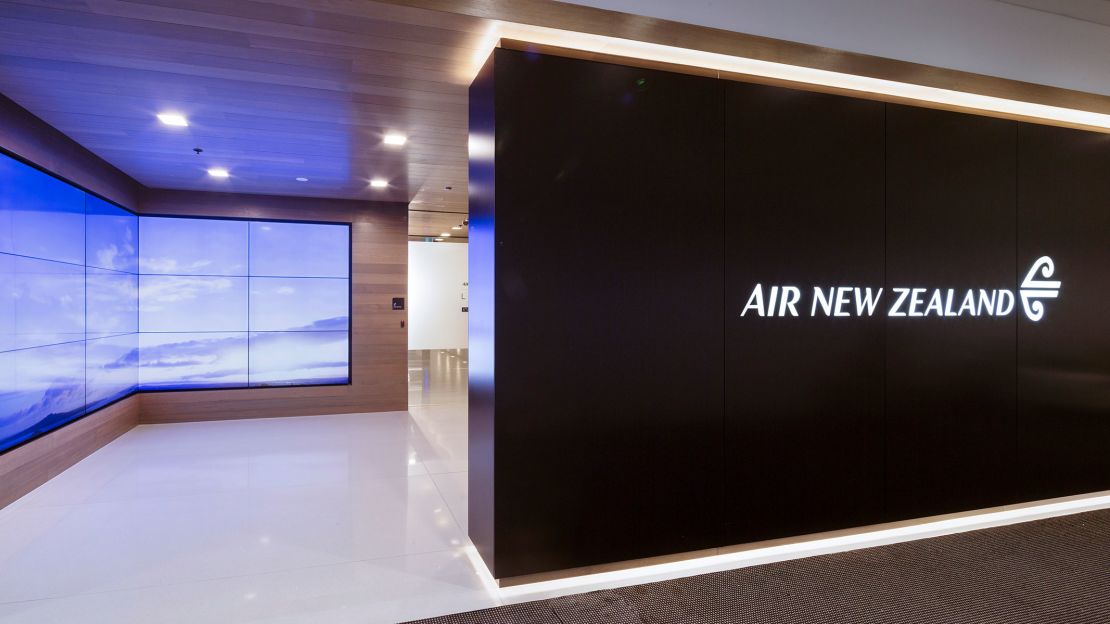
So how do you begin designing an airport lounge?
“It really starts with the airline. Every airline is different,” Loyola tells CNN Travel.
The first lounge the designer worked on was back in the early ’00s – the One World Alliance lounge at LAX.
“I was working with Qantas, Cathay Pacific and British Airways because they all had a stake in that project. So you can imagine three very different points of view, working together,” he recalls.
The architect has since worked extensively with Star Alliance, a network that includes Air New Zealand, Singapore Airlines and United.
He’s also designed lounges for individual airlines.
“It starts with their brand – is it a new design or a lounge they want to continue? And the other thing we’ve seen recently, is – is there a sense of place?”
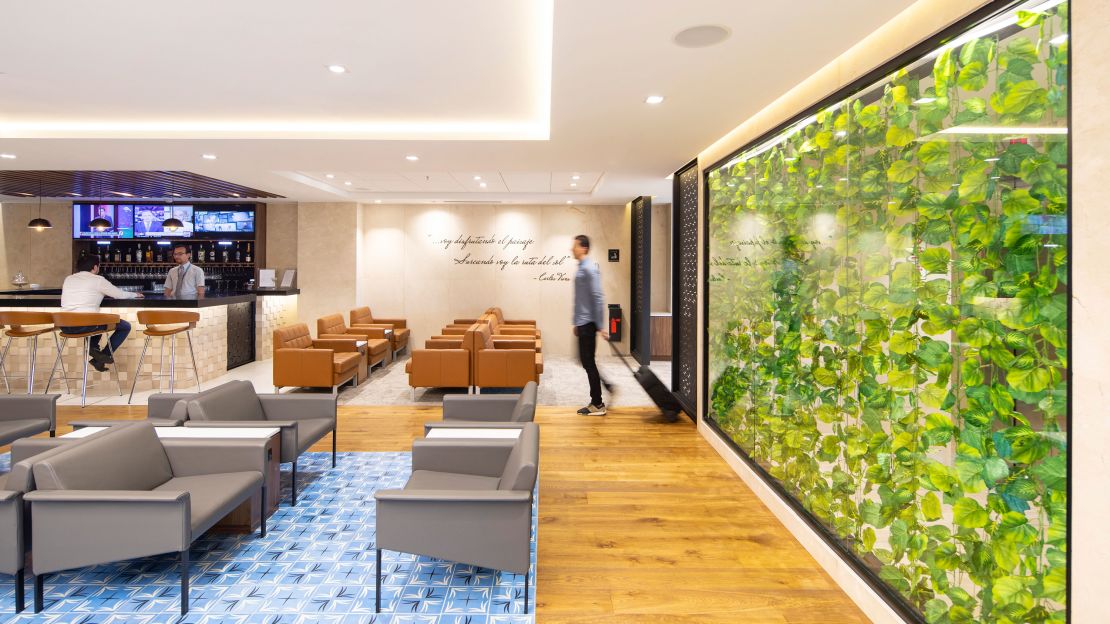
Each airline has a different aesthetic and therefore embraces a different vibe.
“Air New Zealand is very forward on technology and was very much wanting to have things like food theater in their lounges – to really kind of set the mark,” says Loyola.
Other airlines want their lounge to be about the spirit of the destination – Loyola worked with Copa Airlines on their lounge in Colombia, and says Panama’s flagship carrier was keen that the space reflected a flavor of Latin America.
The lounge is important, Loyola says, because it’s usually a traveler’s last memory of the country they’ve been visiting.
If you’re a traveling executive, you might not have seen much of the country you’ve been visiting beyond conference rooms and hotel restaurants. The lounge can offer you a sense of place.
“There are memories that the lounge can invoke, which is kind of the exciting part because every airline has something different,” says Loyola.
Different travelers
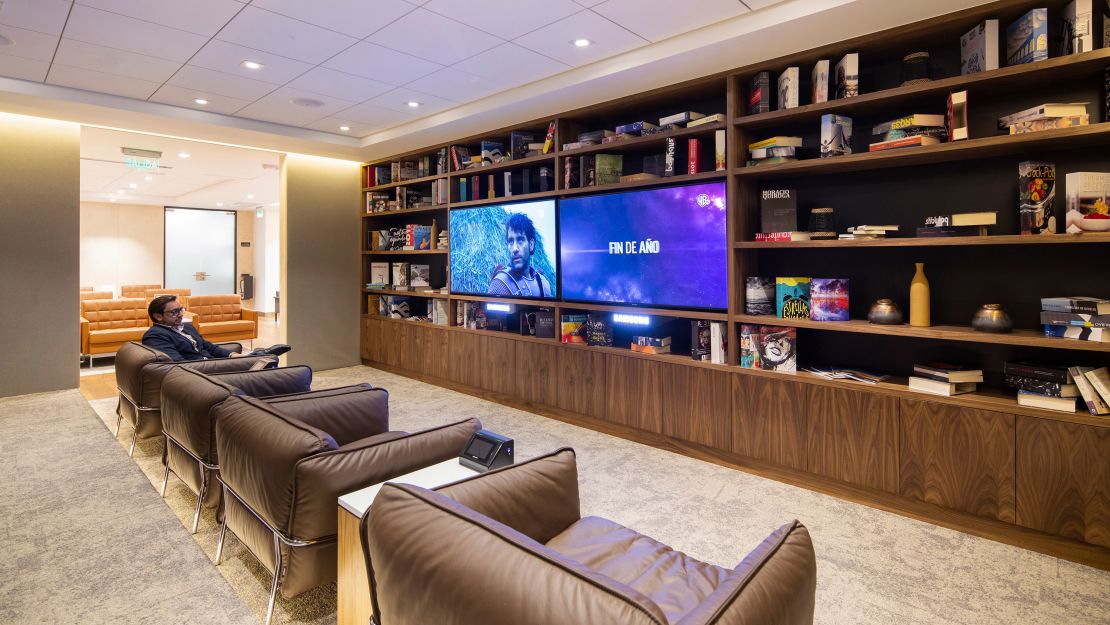
The first step, Loyola says, is to produce a floor plan and work out how many seats will need to be accommodated in the design.
The average lounge user is a business traveler, usually traveling alone or with one other colleague.
But lounges also want to accommodate vacationers, families and couples – the lounge needs to have seating to suit all.
Across the board, whether an airline is working with a small space or a larger lounge, Loyola says they want to get as many people in the space as possible.
“Space is a premium, because most airlines want to maximize seating capacity,” says the architect.
“The last thing they want to do is turn away a business traveler because there’s not a seat – and so we do maximize seating capacity and try to minimize back of house.”
Increasing density while ensuring the space doesn’t feel overcrowded – and leaving space for luggage storage and facilities – is always a challenge, but one Loyola says they can usually make work.
He also points out that an airport lounge has a far higher turnover than, say, a restaurant or hotel bar.
Lounges need to have durable furniture that is built to last.
One change over the last 5-10 years, Loyola notes, is that every seat in the lounge needs to have easy access to a power socket.
“Everyone’s charging an iPhone or an iPad or a tablet,” says Loyola. “100% of the seats need to have access to power, so that obviously impacts the design.”
Place to relax
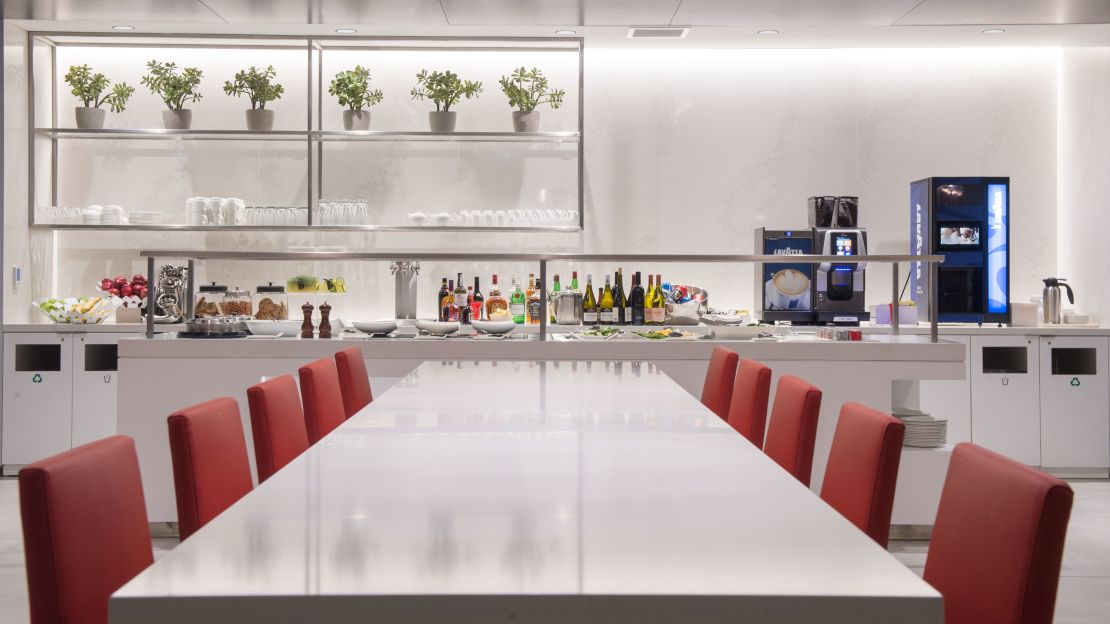
One of the most coveted aspects of first class travel is the thought of a limitless buffet, generous alcohol selection and even – in certain lounges – fine dining.
“The spectrum ranges broadly from a standard buffet to more of an elevated experience – like at Etihad JFK – you have a full kitchen you order from a menu, it’s a full private dining experience,” says Loyola.
The goal, Loyola says, is to make the dining options so appealing that travelers will come early to give themselves plenty of time to enjoy their meal before take-off.
At the Star Alliance Lounge at Los Angeles Airport (LAX), you can enjoy your pre-flight glass of Champagne on a chic adjoining terrace.
“[It’s] outside and overlooks the Hollywood Hills, and you see the planes,” describes Loyola.
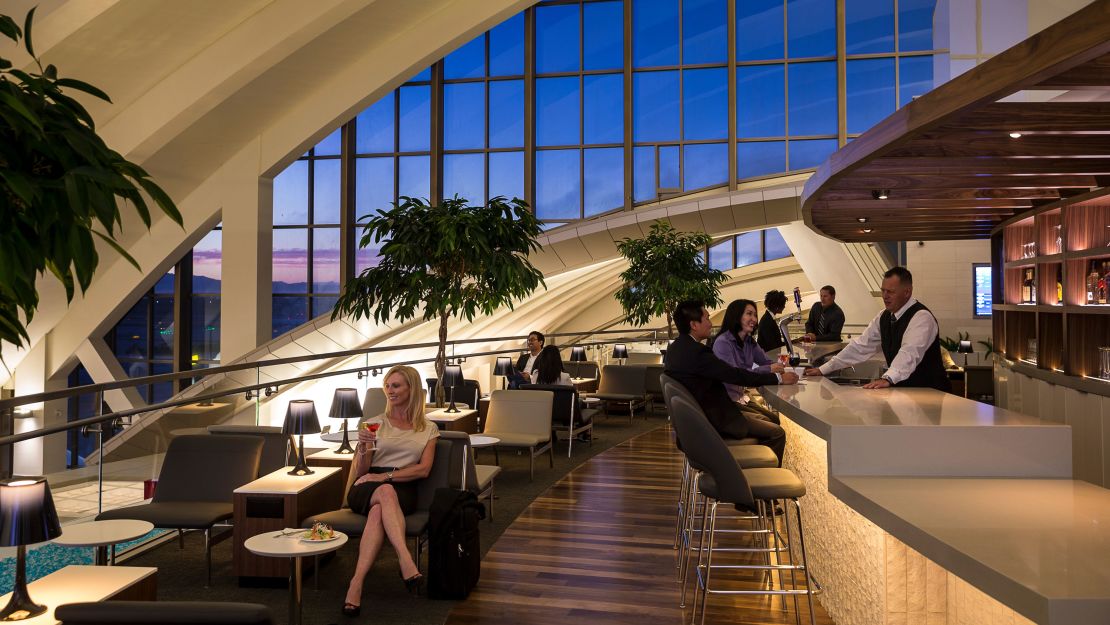
Outdoor space – or at least massive windows to admire the airplanes taking off and landing – is a big trend among airport lounge design.
At LAX’s Star Alliance Lounge, there are fire pits and a water wall, as well as stunning views.
As for the spa or hair salon options, they’re also designed to elevate the overall experience – and inspire loyalty among the lounge customers.
“Most lounges, it’s their most exclusive customer that they covet – especially the business traveler, the one that has frequent trips. They want to do it right.”
And if you’re lucky enough to get an upgrade, the airline wants to use the wonders of the lounge to woo you into booking business next time.
Of course, it’s not all glamorous, working in an operating airport isn’t always easy and there can be some logistical challenges.
“The airport authority will have input and making sure you’re keeping them happy and all the other stakeholders is always a challenge,” says Loyola.
Other memorable lounges
Loyola’s job takes him across the world – and along the way he always tries to experience the airport lounges he didn’t work on too.
He highlights Cathay Pacific’s The Wing lounge in Hong Kong and British Airways’ Galleries Lounge at Heathrow Terminal 5 as particular standouts.
The Wing offers Zen-like, private cabanas for first class passengers featuring large baths and shower suites.
In terms of future trends, Loyola says the use of media in lounges is something that’s constantly evolving: “You have multiple TVs and you can plug into this TV that you want to listen to,” says Loyola.
His team are also considering developing lounge access through facial technology, rather than scanning a boarding pass.
The main goals are to continue to make lounges that feel like an escape from the busy airport, but still celebrate the spirit of aviation.
“They are an oasis or an escape in the airport,” says Loyola.















